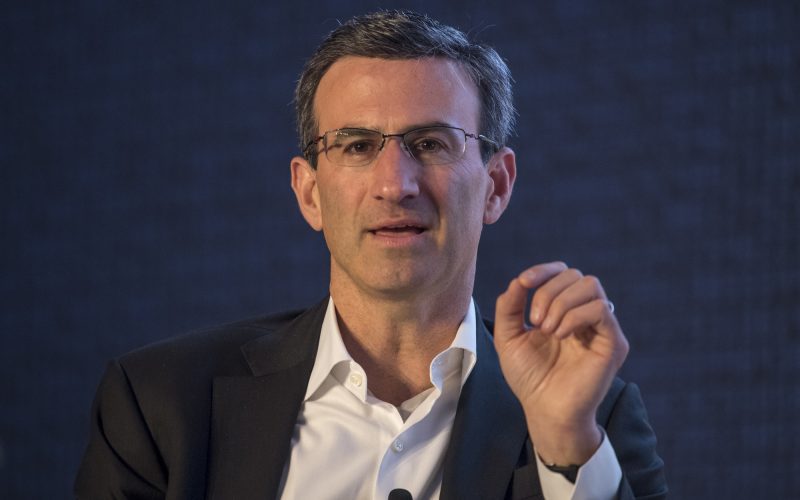Peter Orszag, a prominent figure with a rich background in both public service and private sector finance, has taken the helm at Lazard, a leading financial advisory and asset management firm. Known for his tenure as Director of the Office of Management and Budget under President Obama and his subsequent roles in the private sector, Orszag brings a vision to modernize and transform Lazard. However, the question looms: will his bankers let him?
Peter Orszag’s Background and Vision

Peter Orszag’s extensive experience in both government and finance positions him uniquely to lead Lazard into a new era. His public sector roles have endowed him with a deep understanding of economic policy and fiscal management, while his private sector experience, including his tenure at Citigroup and as Vice Chairman of Investment Banking at Lazard, has provided him with insight into the intricacies of financial markets and advisory services.
Orszag’s vision for Lazard involves modernizing the firm’s operations, embracing technological advancements, and expanding its services to address the evolving needs of the global market. He aims to integrate data analytics and artificial intelligence into the firm’s advisory processes, improve operational efficiencies, and expand the firm’s global footprint.
Challenges from Within: Bankers’ Perspectives
Lazard’s bankers, known for their traditional approach to financial advisory, might present the most significant hurdle to Orszag’s ambitious plans. The firm’s culture is deeply rooted in its long-standing reputation for high-touch, personalized advisory services. Many bankers may resist changes that could disrupt the firm’s established methods and client relationships.
Concerns among the bankers include the potential depersonalization of client interactions through increased reliance on technology, the risk of diluting the firm’s brand identity, and the challenges associated with integrating new technologies into existing workflows. Additionally, there is apprehension about the potential cost implications and the transition period required for such a significant overhaul.
Analysis of Orszag’s Proposed Changes
| Proposed Change | Potential Benefits | Potential Challenges |
|---|---|---|
| Integration of Data Analytics and AI | Enhanced decision-making, improved client outcomes | High implementation costs, resistance to change |
| Operational Efficiency Improvements | Cost savings, streamlined processes | Disruption of current workflows, training requirements |
| Expansion of Global Footprint | Increased market share, diversified revenue streams | Cultural integration issues, increased operational complexity |
| Emphasis on Technological Modernization | Staying competitive, attracting tech-savvy clients | Balancing tradition with innovation, potential job displacements |
Comparative Analysis: Lazard vs. Competitors
| Aspect | Lazard (Current) | Goldman Sachs | Morgan Stanley |
|---|---|---|---|
| Advisory Approach | High-touch, personalized | Data-driven, tech-integrated | Mix of traditional and modern approaches |
| Technological Adoption | Moderate | High | High |
| Global Presence | Strong, but with potential for growth | Extensive, well-established | Extensive, well-established |
| Innovation Strategy | Emerging under Orszag’s leadership | Aggressive | Balanced |
| Cultural Resistance | Potentially high | Moderate | Moderate |
Strategic Recommendations
Enhancing Technological Adoption
For Orszag’s vision to materialize, a phased approach to technological adoption could help mitigate resistance. Introducing pilot projects that demonstrate the tangible benefits of data analytics and AI in advisory processes can help build confidence among bankers. Training programs that upskill employees in these new technologies will also be crucial in easing the transition.
Preserving the Firm’s Core Values
While modernization is essential, preserving Lazard’s core values of personalized service and client trust is equally important. Orszag should emphasize that technology will augment, not replace, the human touch that defines Lazard’s brand. Clear communication about how these changes will enhance client outcomes without compromising on service quality can help align the firm’s internal stakeholders.
Expanding Global Operations
Expanding Lazard’s global footprint will require a strategic approach to cultural integration and operational complexity. Establishing local partnerships and understanding regional market dynamics will be key to successful expansion. Additionally, leveraging technology to manage and streamline global operations can help maintain consistency and efficiency across different markets.
Addressing Financial Concerns
The cost implications of Orszag’s proposed changes cannot be overlooked. A detailed financial plan that outlines the expected return on investment and cost-benefit analysis can help address concerns. By demonstrating how these investments will lead to long-term growth and profitability, Orszag can garner support from both bankers and stakeholders.
Conclusion
Peter Orszag’s vision to reimagine Lazard is ambitious and forward-thinking, aiming to position the firm as a leader in the modern financial landscape. However, the success of this transformation hinges on his ability to navigate internal resistance and align the firm’s bankers with his strategic goals. By balancing innovation with tradition and carefully managing the implementation of technological advancements, Orszag can steer Lazard towards a prosperous future.
The challenge remains: will his bankers let him? The answer lies in effective leadership, clear communication, and a collaborative approach to change management. With these elements in place, Lazard can embrace a new era of growth and innovation, maintaining its esteemed legacy while evolving to meet the demands of a dynamic global market.












